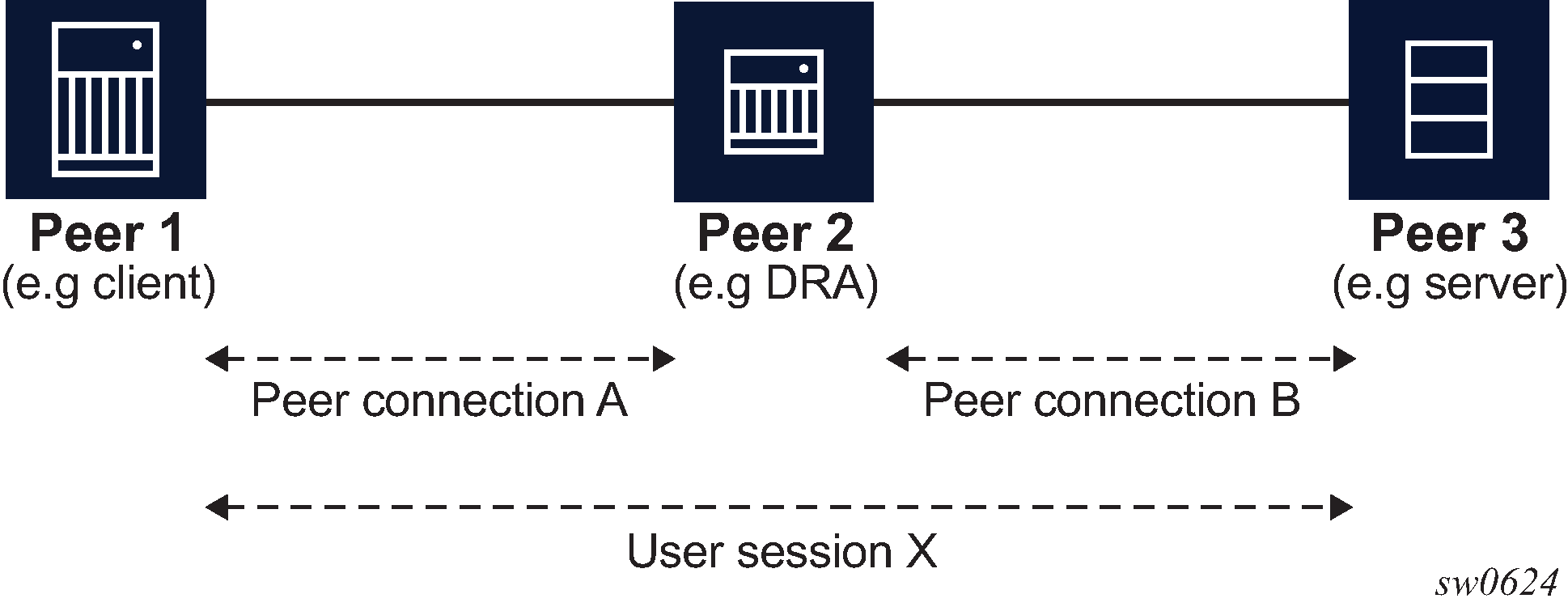Diameter peers exchange messages using a transport level connection (TCP in SR OS). Each peer is identified by a unique Fully Qualified Domain Name (FQDN). On the IP level, Diameter peers are always directly connected.
Applications (NASREQ, Gx, and Gy) relaying on Diameter base protocol use a concept of a session to communicate between the two end nodes that may be adjacent to each other or they may be multiple Diameter hops away.
This concept is shown in Figure: Diameter peers.

SR OS supports Diameter client functionality where it performs access control for a device running on the edge of the network. A Diameter client in an SR node can initiate and accept connection requests to and from its peers. A connection request is only accepted from another SR node in Diameter multi-chassis redundancy setup. This peering connection between the two redundant Diameter SR nodes is referred to as inter-peering connection and its use is described in Diameter multi-chassis redundancy.
A Diameter server hosting multiple applications must support all applications over a single peering connection. In other words, such a server must not open a separate peering connection per application because peers in the forwarding table are not application aware.